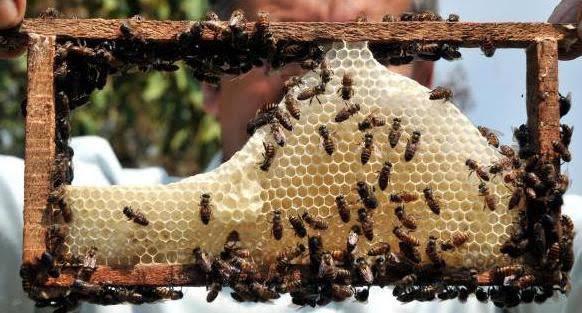How I Built a $41,000/Month Honey Farm Business From Scratch
Starting a honey farm business transformed my life in ways I never imagined. As a former Army bomb squad veteran struggling with PTSD, I discovered that beekeeping offered more than just therapeutic benefits – it became a thriving business venture generating over $41,000 monthly revenue. Here’s my complete journey from starting with just $500 to building a successful honey production enterprise.
We strongly recommend that you check out our guide on how to take advantage of AI in today’s passive income economy.
Table of Contents
Finding Purpose Through Beekeeping
The journey into beekeeping began as a quest for healing. Traditional medications prescribed by Veterans Affairs left me feeling disconnected, and I needed an alternative. A fellow veteran beekeeper suggested trying beekeeping, citing studies about its calming effects on PTSD sufferers. The methodical nature of working with bees requires focused attention and deliberate movements, creating a meditative state that proved more effective than conventional treatments.
The Birth of Secret Garden Bees
The business name “Secret Garden Bees” emerged from humble beginnings in 2020. Initially skeptical about keeping bees, my wife agreed to let me start with two hives hidden away on our property – hence the name. What started as a therapeutic hobby in a secluded corner of our land has now grown into a thriving operation with 62 hives, demonstrating the incredible scaling potential of a honey farm business.
Initial Investment and Growth
The barrier to entry in beekeeping is surprisingly low. My initial investment was merely $500, which covered essential equipment: a bee suit, gloves, hive tool, smoker, and two complete hives with bees. The fascinating world of bee acquisition includes the option to order them through mail – three pounds of live bees with a queen arrive in a specialized package through the postal service.
Revenue Growth and Business Evolution
The financial trajectory of Secret Garden Bees showcases the potential of strategic scaling in the honey industry:
Year 1 (2020): $1,000 revenue
Year 2 (2021): $10,000 revenue
Year 3 (2022): $100,000 revenue
Year 4 (2023): $150,000 revenue
Current Year (2024): $250,000 (projected based on first six months)
Initial profit margins started at 20% due to limited scale, but have now increased to 40-50% through operational optimization and expanded distribution channels.
The Heart of Honey Production
The honey production process requires careful attention to detail and specific equipment. Each hive consists of brood chambers where bees live and honey supers where they store excess honey. A single hive can produce between 60-100 pounds of honey annually, potentially generating $1,000 per hive at current market prices of approximately $20 per pound.
Production Facility and Equipment
Operating from a modest facility, we maintain a debt-free business model. The core of our operation centers around specialized equipment:
- Two 25-gallon tanks maintaining honey at 104 degrees
- A Daytan fill master machine for precise bottling
- Various storage and processing equipment
A crucial investment was $20,000 in bottling equipment, largely funded through small farmer grants, which dramatically improved our production efficiency from 80 hours per 1,000 pounds to just 8 hours.
Marketing and Distribution Strategy
Our success stems from targeting upscale markets with premium packaging. The distinctive glass bottles with cork stoppers, though more expensive and labor-intensive than plastic alternatives, command higher prices and attract quality-conscious customers. The product design, refined over 18 months, perfectly positions our honey in high-end retail environments.
Retail Success and Growth
A major breakthrough came through securing placement in Fresh Market grocery stores, expanding from 6 to 170 locations. Strategic positioning in produce sections rather than regular grocery aisles has proven more profitable, as produce shoppers typically have higher spending capacity for premium products.
Leveraging Government Resources
As a veteran entrepreneur, I’ve maximized various government programs and resources:
- Acquired essential equipment through government surplus at fraction of retail costs
- Utilized veteran hiring programs for significant tax benefits
- Secured farming grants for equipment purchases
- Implemented USDA insurance coverage for hive protection
Lessons Learned and Business Wisdom
The journey has taught invaluable lessons about entrepreneurship:
- Risk management is crucial for sustainable growth
- Quality equipment investments enable scaling
- Premium positioning can justify higher prices
- Government resources can significantly reduce operational costs
- Building retail relationships requires patience and persistence
The success of Secret Garden Bees demonstrates that with proper planning, risk management, and strategic growth, a small beekeeping operation can transform into a thriving business while maintaining its therapeutic benefits and environmental impact.

We strongly recommend that you check out our guide on how to take advantage of AI in today’s passive income economy.




